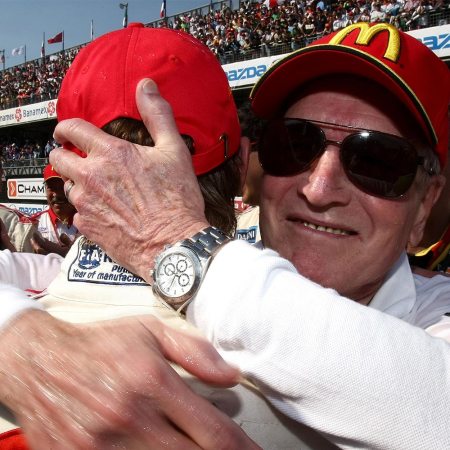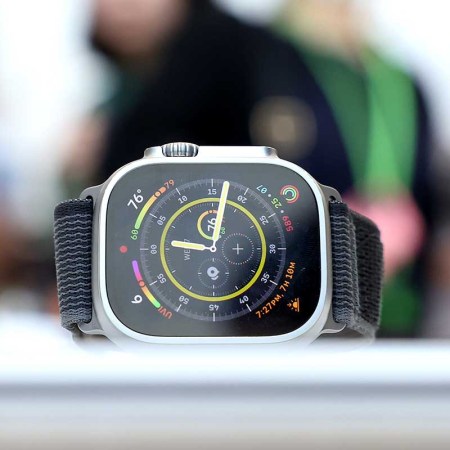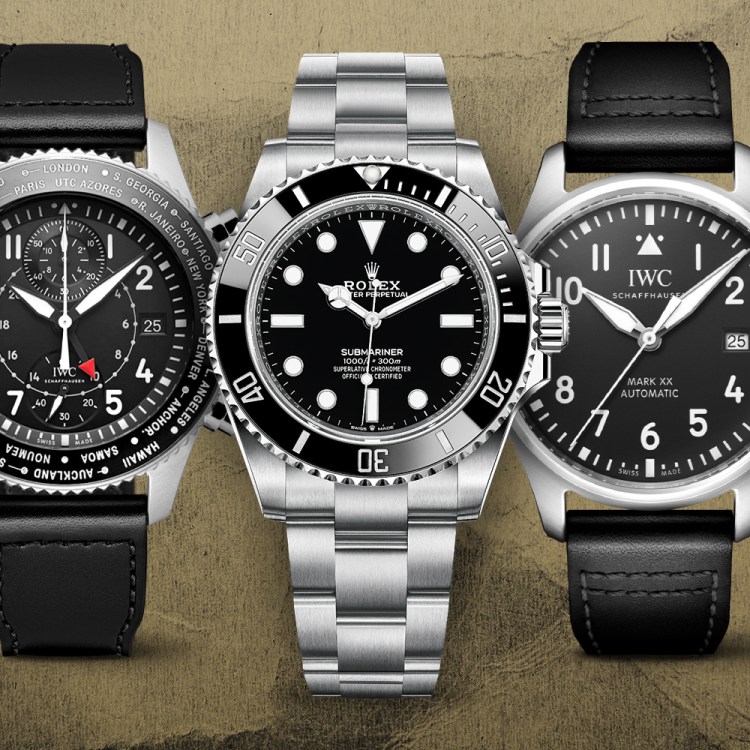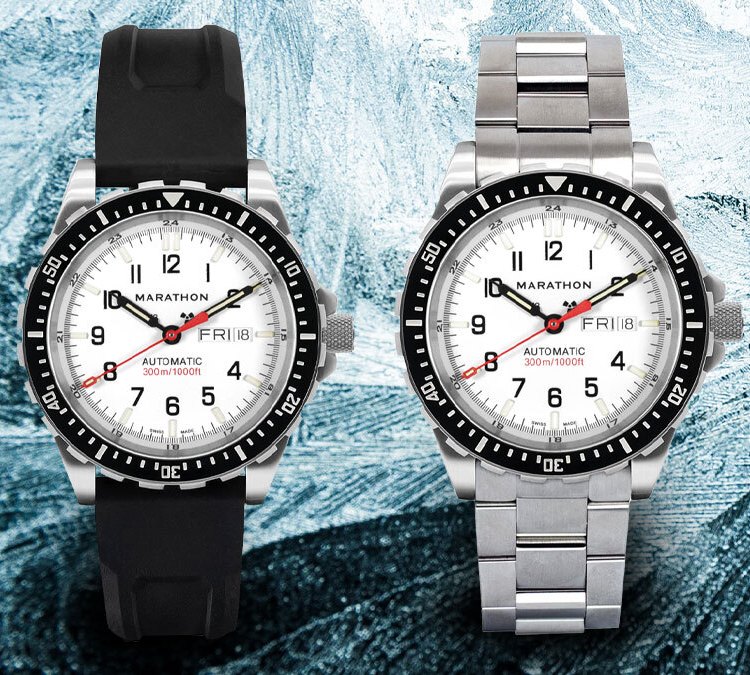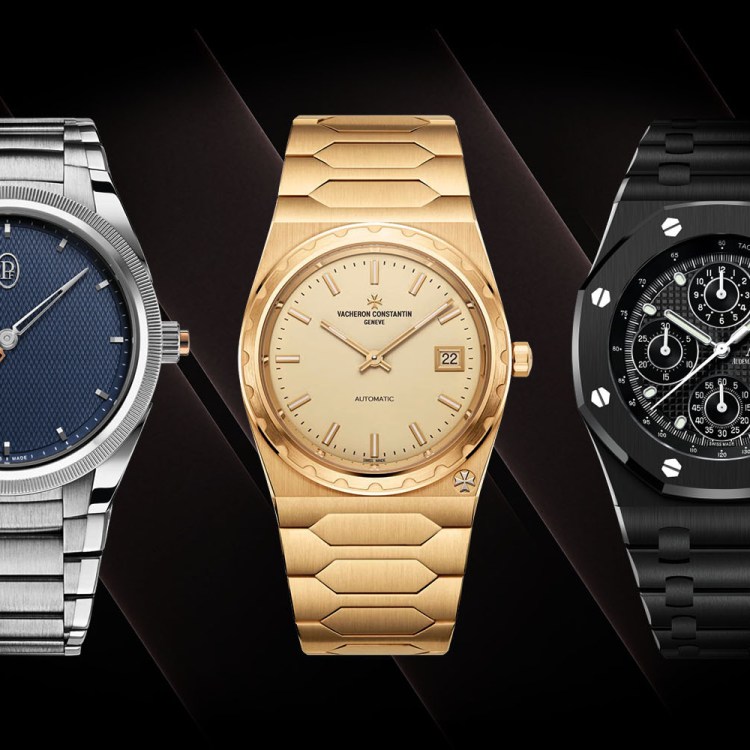“As long as they are electronic — which they are — smartwatches are, for me, not to be considered as a watch,” Raynald Aeschlimann tells me.
We are sitting in the Omega Chalet, an aggressively air-conditioned hospitality tent overlooking the 18th green at Charlotte’s Quail Hollow Club, host of the 2017 PGA Championship. The President and CEO of Omega since June 2016, Aeschlimann is reiterating to me a stance espoused by his predecessor, Stephen Urquhart, who bossed the Swiss company for 17 years: Omega is in the business of mechanical watches, which means they are expressly not in the business of smartwatches.
“A watch has a history,” he continues. “A watch has emotion. Even if you put it in a drawer, the day you take it out, it remembers you. And electronic has no soul, has no emotion. So, I’m very clear on [the question of Omega releasing a smartwatch]: No. But that doesn’t mean that we cannot have some evolution of our watch.”
Which brings us to the multimillion-dollar question(s): How does a company that has long since mastered its craft — building precise, enduring mechanical watches — evolve? Stay relevant? Capture the attention (and disposable income) of a generation of people raised on smartphones and Snapchat?
For Mr. Aeschlimann, it’s simple: you innovate. Sure, no one is going to reinvent the Swiss movement, but subtle adjustments can better optimize it for a plugged-in world and the people who inhabit it. And Omega, perhaps more than any other luxury watchmaker, is at the fore of that initiative.
Here are four ways Aeschlimann and co. are ensuring that analog remains as relevant as ever in a digital world.
1. Pursue the white whale: perfect timekeeping
In 1936, Omega scored a 97.8 out of a possible 100 points in the Kew-Teddington Observatory trials, one of a handful of astronomical observatories that rate the accuracy of watches each year. It was a record that would stand for 32 years. Which is to say: high-end watches have been insanely accurate for a long time, and it’s extremely difficult to improve on their performance. And yet, Omega has achieved — and continues to achieve — just that.
In 1999, they incorporated legendary watchmaker George Daniels’s co-axial escapement into their movements, which decreases friction, thereby enhancing both the watch’s accuracy and longevity. Some consider it the most important watch innovation of the 20th century — and yet, to this day, Omega remains the only major watch brand to have made the transition.
2. Identify and protect against the problems posed by a brave new world
“Why do we have so much magnetics around us?” Aeschlimann posits. “Because of all these phones and all the things that the new generation needs to have around.” And magnets can have very adverse effects on intricate analog instruments made up of hundreds of tiny pieces of metal — like, y’know, watches.
So, in 2013, Omega began investing a huge amount of labor and resources into anti-magnetism technology. Two years after, they recruited the help of the Swiss Federal Institute of Metrology to establish a new independent, third-party watch certification called the Master Chronometer. This certification subjects each and every watch bearing its label to eight tests that confirm precision, power reserve, water resistance and — unlike existing watch certifications, like the COSC — performance in the presence of magnetic fields.
3. Personalize the aesthetics
You won’t see an Omega movement undergo startling changes overnight. But unlike many of their competitors, they’re more than willing to experiment with cosmetic changes. Case in point: the new Aqua Terra Golf, which updates a classic with colorful accents that Aeschlimann feels make it more approachable to a younger, sportier consumer.
The Sergio Garcia edition opts for a black-and-green strap and colorway (an ode to his first Green Jacket), while the Rory McIlroy goes black and orange. “By having this bracelet, we are showing that Omega is a dynamic brand,” says Aeschlimann. “People want an Omega, but sometimes they want to get a bit more of their personality. For me, it’s another sign that we can adapt our watches to the taste of today’s young guys.”
4. Be more than just a watch — be a tech company
Let’s face it: among the giants of horology — Omega, TAG, Rolex, Patek et al. — you won’t find a substandard watch. They’re all precise. They’re all beautiful. They’re all exceptional. So when a consumer makes a purchase decision, he is investing in more than mechanics: he is investing in a brand and its story. He is, in essence, aligning his own identity with that of an object.
As Aeschlimann puts it: “[Millennials] are the consumers of the future. And one thing we know is they like brands. What they buy is based and totally in line with their values. And I think that this is something that you have to be prepared for.”
And in their expertly curated partnerships with athletes and major sporting events, Omega is breathing new life into a story that began more than 150 years ago. At the Olympics, they play the role of official timekeeper, using dazzlingly sophisticated technology to not only record precise times, but also to produce the live graphics and interactive elements that appear on your television screen.
“Look at what we’ve done with swimming in the Olympics,” says Aeschlimann. “For the viewers and for the athletes. The analysis we give, the timing, the fact that you can see the world record moving.”
At the PGA Championship, they play a similar role. “The technology that we can provide to people on television — the way the ball is leaving [the club], etc. — is something we have been working on with the PGA. We always find a way for our technology to make the sport even more attractive for the viewer,” Aeschlimann says.
What Omega is doing, then, is demonstrating itself to be a technologically savvy and agile company without actually incorporating unnecessary technology into its core product: the mechanical wristwatch. And in doing so, they’re making an analog product as relevant as ever — the digital world it inhabits be damned.
All images courtesy Omega Watches
This article was featured in the InsideHook newsletter. Sign up now.
